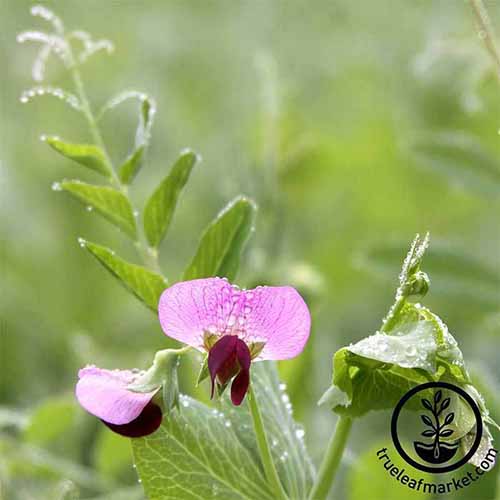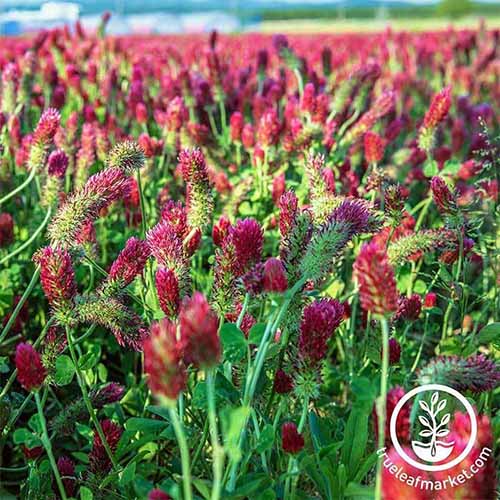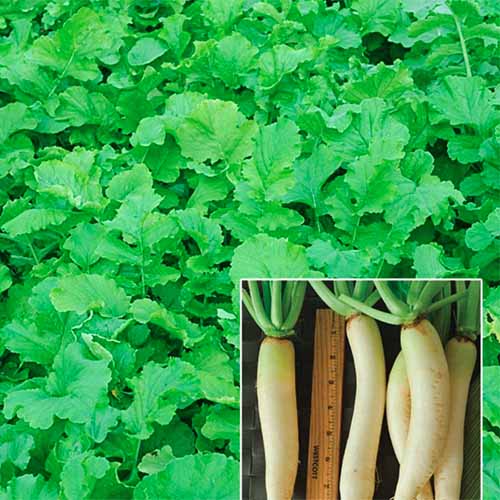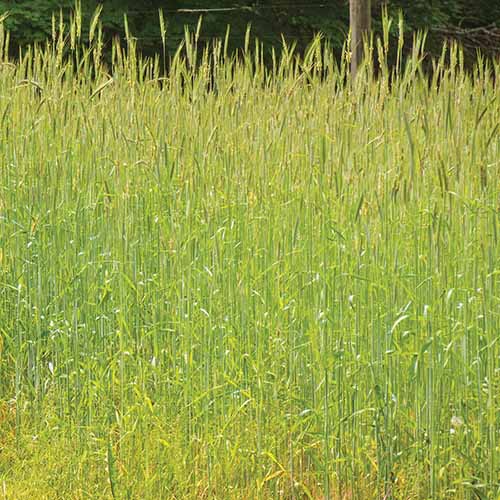Cold weather cover crops, or green manure crops, are planted from the end of summer to early fall for the purpose of enriching and protecting the soil.
Often overlooked in the home garden, they offer an easy and economical method of improving your garden’s productivity while it lies fallow in winter.
They’re an excellent, natural way to increase nutrients, condition the soil and improve its texture, protect against erosion, and suppress weeds at the same time.
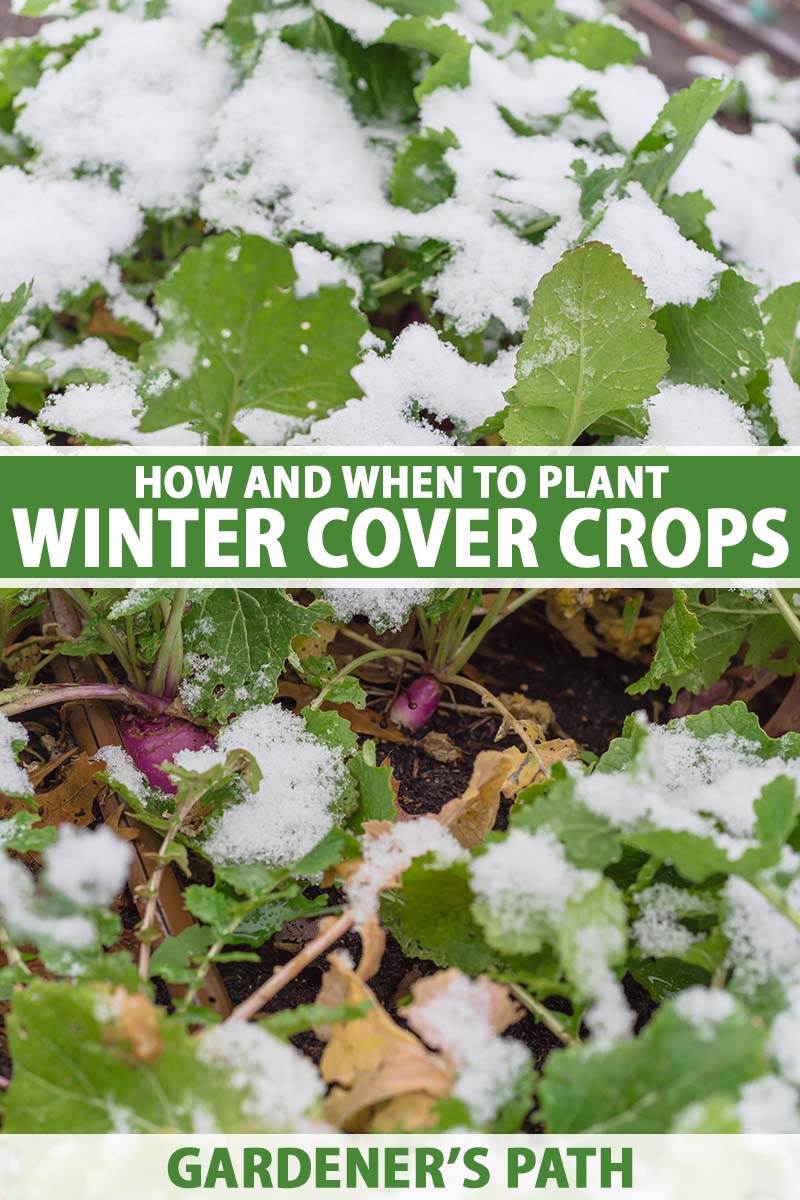
We link to vendors to help you find relevant products. If you buy from one of our links, we may earn a commission.
They also help to prevent water runoff, improve soil moisture retention, and provide valuable cold weather food and protection for birds, insects, and wildlife.
And they’re just as effective in small garden beds as they are for large-scale, commercial farmers.
So instead of letting your garden rest over winter, put a cold weather cover crop to work for better soil – your flowers, herbs, and veggies will love it!
Here’s what’s ahead:
What You’ll Learn
What Are Cold Weather Cover Crops?
Cold weather cover crops are those brassicas, grains and grasses, and legumes planted in late summer or early fall for the purpose of providing green manure and/or winter soil protection.
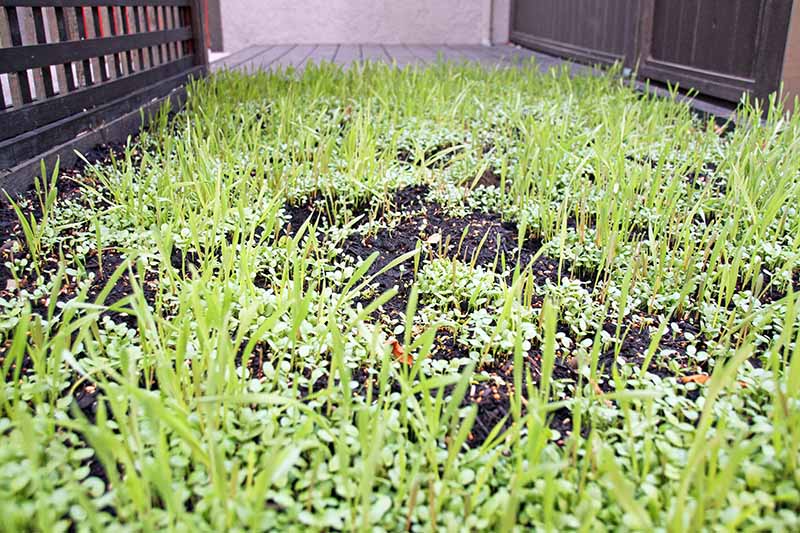
They’re clever end-of-season placeholders for your garden when you’re heading into winter.
Instead of buying or otherwise coming up with mulch materials, you can plant cover crops that do the mulching for you instead – forming a layer of living mulch once the plants die back from frost and cold.
Why is cold weather cover important? There are several good reasons:
The foliage and root systems help prevent erosion and loss of fertile topsoil due to rain, wind, or snow. Extreme weather can (and will) strip away all the hard work you dedicated to soil-building over the season.
A covering layer improves water absorption, retains moisture, and reduces compaction. The foliage deflects heavy rain, so it enters the soil at a slower, gentler rate.
This helps to hold water at deeper levels, prevents beds from compacting or drying up over winter, and results in improved drainage.
Retaining moisture is an important aspect of soil biology that ensures the resident insects, microbes, and worms thrive and produce the nutrients most beneficial to your plants.
Cover crops improve the soil composition and structure, and also minimize the amount of weeds that pop up, which can crowd out your young seedlings.
Some are used to scavenge and fix nitrogen in the soil, making nutrients more readily available for the crops that follow. “Fixing” is the conversion of atmospheric nitrogen into usable chemical compounds in the soil.
Certain overwintered crops, like the brassicas arugula and radish, leave chemical residues in the ground that help to bust up pest cycles, such as those of nematodes.
Some grasses, like the cereals winter rye and winter wheat, can survive freezing temperatures, providing protection in harsh weather plus a harvestable crop the following spring.
The forage legumes, such as alfalfa and crimson clover, can also be harvested in spring for livestock feed, or grazed down before turning them under for green manure.
And cover cropping also reduces the use of manufactured fertilizers, which load our waterways with synthetic nitrates and phosphates from runoff, potentially creating dead zones in the oceans and causing other environmental problems.
Now that you have a sense of their beneficial qualities, let’s look at the different types of cover crops to help determine which is best for your garden.
Types of Cover Crops
A basic understanding of the different types of plants used as cover crops is helpful to select what’s right for your garden.
There are three primary categories of cover crops (outlined below), which fall into two groups: winter-killed, and winter-hardy.
Winter-killed plants produce sufficient quantities of autumn-grown biomass to protect the soil, though they are killed by midwinter temperatures.
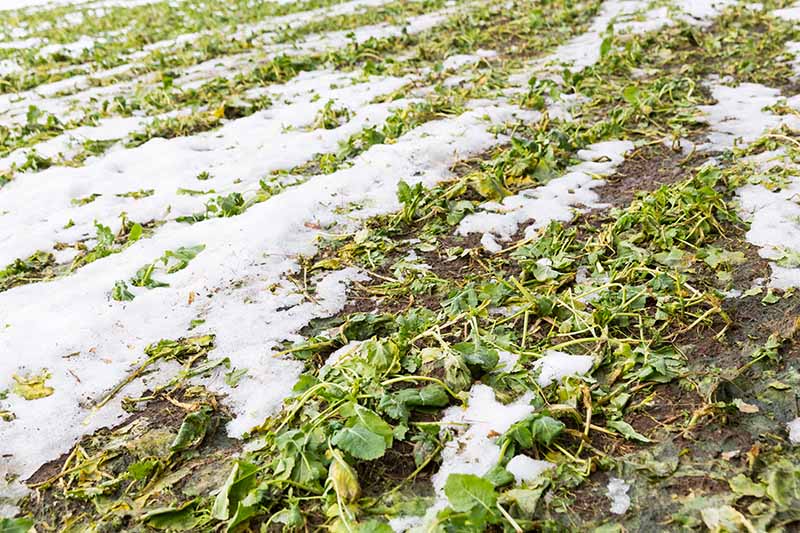
Examples of winter-killed plants include oats, field peas, and forage radishes.
Winter-hardy crops are those that survive winter and resume growth in spring.
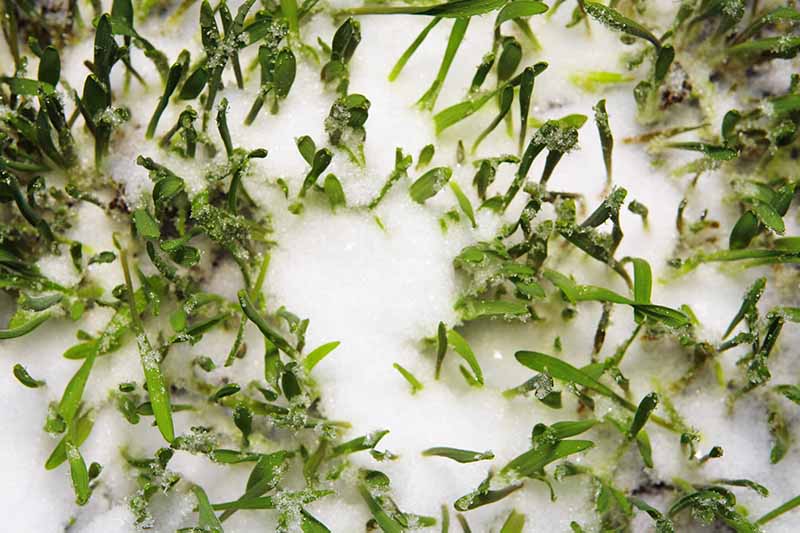
Examples of winter-hardy plants include crimson clover, winter rye, and hairy vetch.
Now, let’s have a look at the three primary categories of cold weather cover crops.
Brassicas
Brassicas are members of the Brassicaceae family, and offer several benefits as a cold weather cover.
While they’re growing, these plants fix nitrogen, and after they die and break down, it is released back into the soil. Their fall growth is rapid and provides excellent coverage, quickly producing a generous quantity of biomass.
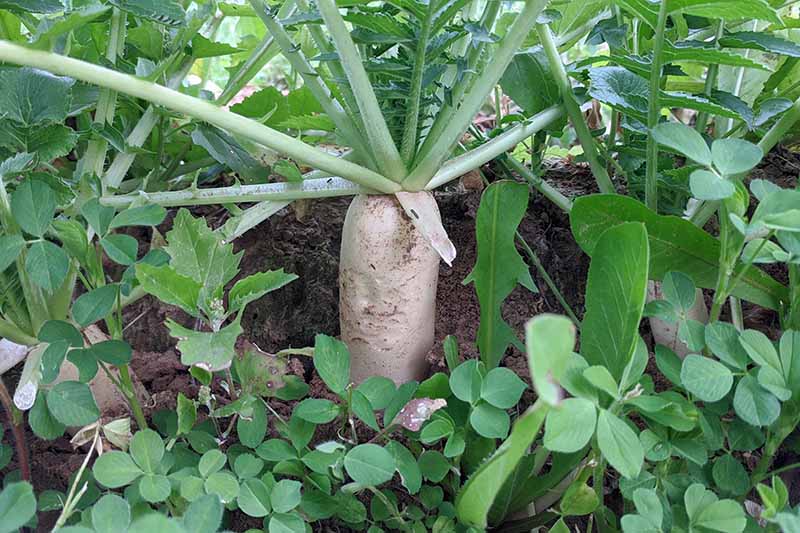
Taproots, such as those from forage (or daikon) radishes, can also pull nutrients from deeper in the soil, and they do a good job of reducing soil compaction and density.
These brassicas are typically frost or cold tender and die off in freezing temperatures, forming a protective layer over the soil with their foliage.
Common brassicas used for winter protection include arugula (Eruca vesicaria), canola or rapeseed (Brassica rapa, B. napus), mustard (B. hirta, B. juncea, B. nigra) and forage radish (Raphanus sativus var. longipinnatus).
To ensure the greatest biomass production and nutrient scavenging throughout autumn, brassicas are best planted from mid-August to mid-September depending on your region.
Grains and Grasses
The grains and grasses used for cold-weather cover cropping belong mainly to the Poaceae family, with the exception of buckwheat, which is in the Polygonaceae family.
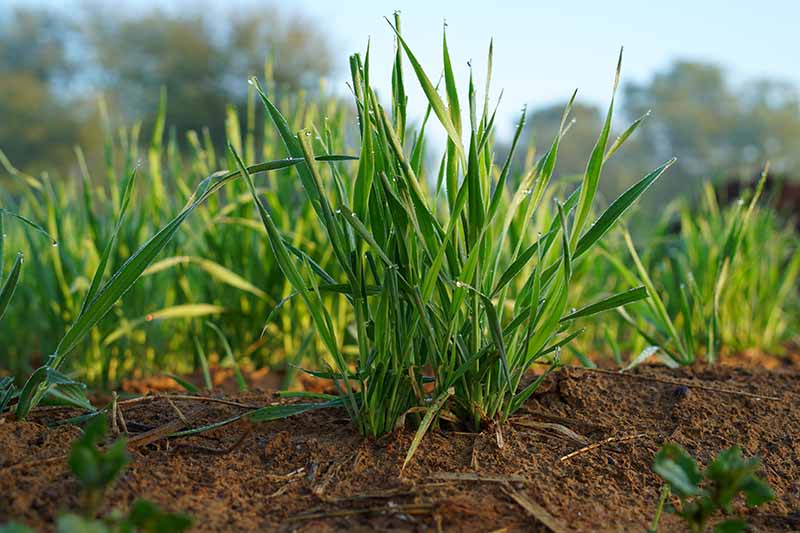
Cereal grains like barley, buckwheat, oats, rye, and wheat all produce dense, fibrous roots that are excellent for preventing erosion and aiding weed suppression. And they produce a lush aboveground biomass as well.
A few of the grasses, like winter rye and winter wheat, are winter-hardy, but most are winter-killed.
Common grains and grasses used in winter include barley (Hordeum vulgare), buckwheat (Fagopyrum esculentum), oats (Avena sativa), winter rye (Secale cereale), annual ryegrass (Festuca perennis), and winter wheat (Triticum aestivum).
To ensure adequate growth, winter-killed grasses should be planted by the end of summer, or in mid-September. Winter-hardy rye and wheat can be planted up until the time of the first light frost.
Legumes
Forage legumes are flowering plants that belong to the Fabaceae family and provide a sprawling, thick mat of foliage, fixing atmospheric nitrogen and scavenging it from the soil, then returning it when plants decompose.
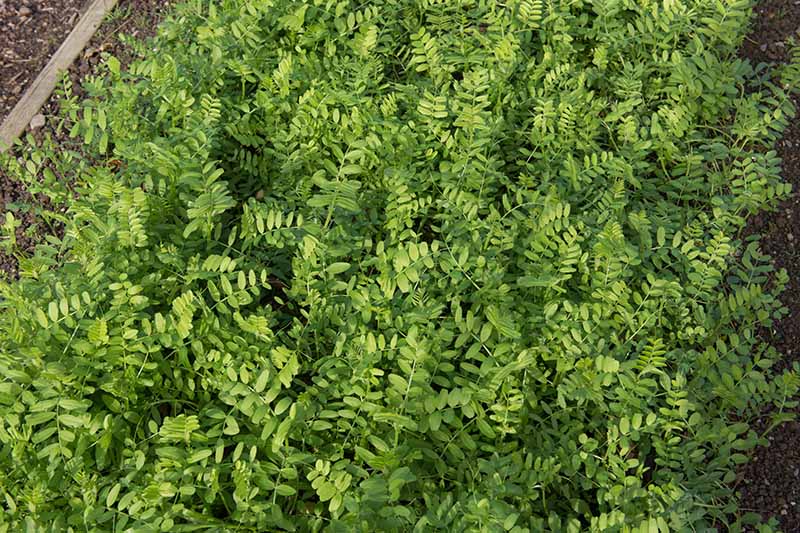
Most often planted as a form of green manure, once established, they provide good weed suppression while their deep roots improve soil conditions.
Legumes also break down faster than brassicas or grasses, making beds available for early spring plantings.
Some popular legumes used for winter protection include crimson clover (Trifolium incarnatum) red clover, (T. pretense), hairy vetch (Vicia villosa), and field peas (Pisum sativum subsp. arvense).
Planting times vary a little for the legume species, but most should generally be planted by mid-to-late September. Clover can be sown until early October.
When to Plant
Cover crops are planted after the main crop is harvested from the garden, and are typically sown from late summer into early autumn.
But keep in mind that later planting means the seeds are going into cooling soils, which results in slower establishment and growth.
As a general rule of thumb, most cover crops require a minimum of four to eight weeks of growth before a killing frost arrives. This allows enough time to maximize aboveground growth for abundant biomass production.
How to Sow
Sowing cover crops is a straightforward process.
- To sow cold weather plants, first remove all remaining garden debris from previous crops, as well as any weeds.
- With a garden fork or spade, dig the ground deeply to a depth of eight to 12 inches, turning the soil and breaking apart any hard clumps.
- Rake the soil evenly, then tamp it down lightly with the back of the rake.
- Broadcast, or scatter, your seeds evenly across the surface, taking care not to plant too thickly.
- Gently rake the seeds into the soil and gently tamp them down.
- Water gently to settle the seeds and soil.
These fast-growing plants are quickly established, and thrive in the warm days and cool evenings of late summer and early fall.
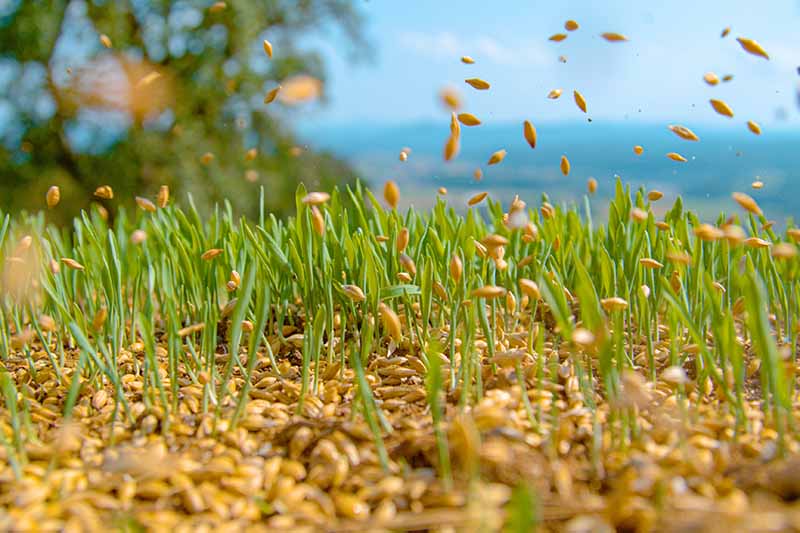
They don’t require supplemental feeding or after-planting care like watering because seasonal dew and autumn rains take care of their moisture needs.
However, dry soil in late summer and early fall can delay germination and plant establishment. If needed, water weekly until consistent rainfall arrives.
Plant Residue and Crop Termination
Cover crops require little maintenance after planting. But the final step of dealing with the plant residue and crop termination still needs to be addressed in spring.
To ensure there is adequate time for the plants to start composting in the soil, they need to be turned and tilled a minimum of four weeks before planting spring crops.
Winter-Killed
Winter-killed plants are those whose roots die and whose foliage collapses on top of the soil in freezing temperatures, forming a mulch-like mat.
In early spring, the mulch mat and roots can be turned over and tilled into the soil where they will decompose naturally.
For raised beds or smaller garden beds in the ground, use a fork or spade to dig in deeply, about eight to 12 inches, and turn over the soil, mulch, and roots, breaking up any large clumps.
For larger beds and plots, using a rototiller or cultivator is the smart way to turn the soil. They’re fun to use and can help you to turn a bed in a fraction of the time it would take to do it by hand.
Check out this cute but hard-working four-cycle Mini Tiller and Cultivator from Honda.
The heavy-duty components and forward rotating tines belie its lightweight maneuverability and compact size – and it’s perfect for digging in backyard cover crops or prepping garden beds.
This model is available at Home Depot.
After tilling, rake the soil loosely to level it, then tamp it down lightly with the flat side of the rake.
Another option is to use the no-till system. Mow down any remaining aboveground growth, and allow it to dry in place for 30 days.
Then simply sow your seeds or plant seedlings through the biomass, which helps to keep roots cool and moist, suppresses weeds, releases nutrients as it breaks down, and attracts earthworms.
Winter-Hardy
Winter-hardy crops are those that resume growth in early spring, and act as a green manure.
These plants are terminated through mowing followed by tillage.
Green manure plants are easiest to mow before they flower, while the stems are still soft and easily severed.
After mowing, turn the biomass into the soil while it’s still green, using the same method as described for winter-killed plants above.
Species to Select
The following are popular choices for cold weather cover cropping in the home garden.
Austrian Field Peas
A cool-weather plant, Austrian field peas, Pisum sativum subsp. arvense, are low-growing, vining plants that quickly provide dense foliage.
A top choice to replenish nitrogen and improve soil structure, the thick, winter-killed foliage is also effective at weed suppression. Austrian field peas are hardy in Zone 6 and above.
Seed in wholesale packets or bulk sizes is available at True Leaf Market.
Buckwheat
Fast-growing buckwheat, Fagopyrum esculentum, establishes a large, dense biomass that provides a dense blanket of mulch.
Highly effective for erosion control, weed suppression, and soil conditioning, the winter-killed residue decomposes quickly, releasing nutrients back into the soil.
Buckwheat’s fast growth and decomposition makes for efficient crop rotation. Plan to sow seeds four to six weeks before your average first frost date.
Bags of seed are available at the Home Depot.
Crimson Clover
A winter-hardy plant in Zones 6 and above, crimson clover, Trifolium incarnatum, spreads fast and thick, providing a dense biomass blanket.
A good choice for erosion control, nitrogen fixing, soil conditioning, and weed suppression, clover’s foliage and roots break down quickly after tilling. Turn it under before flowering starts in spring.
In Zones 5 and below, crimson clover can be planted in late summer as a winter-killed annual.
You can purchase packets and bulk packages of seeds at True Leaf Market.
Forage Radish
Forage radish, Raphanus sativus var. longipinnatus, offers quick growth, ample above-ground biomass, and deep taproots.
A winter-killed plant, the foliage provides plenty of biomass for erosion control, and the deep roots are superb at breaking up tough, compacted soil.
As the roots break down, they act as a natural biofumigator that disrupts the life cycle of certain pests, like harmful nematodes.
A cool-season plant with rapid germination and growth, forage radish can be planted up to three weeks before the first frost date in your region.
Bags of seeds can be purchased at Home Depot.
Winter Rye
Easy to grow and to turn under, winter rye, Secale cereale, is winter-hardy and develops a deep, thick root system and ample top growth.
A good choice to condition the soil and improve structure, it also makes an excellent green manure when tilled.
This crop can be sown in late summer to mid-autumn in Zones 3 to 7, and from fall to midwinter in Zones 8 and above. Plants should be dug in before flowering occurs.
Seeds are available from Burpee.
You’re Covered!
Erosion control, green manure, nitrogen fixing, and weed control – whatever the reason, cold weather cover crops are an easy and economical way to improve the condition of your soil!
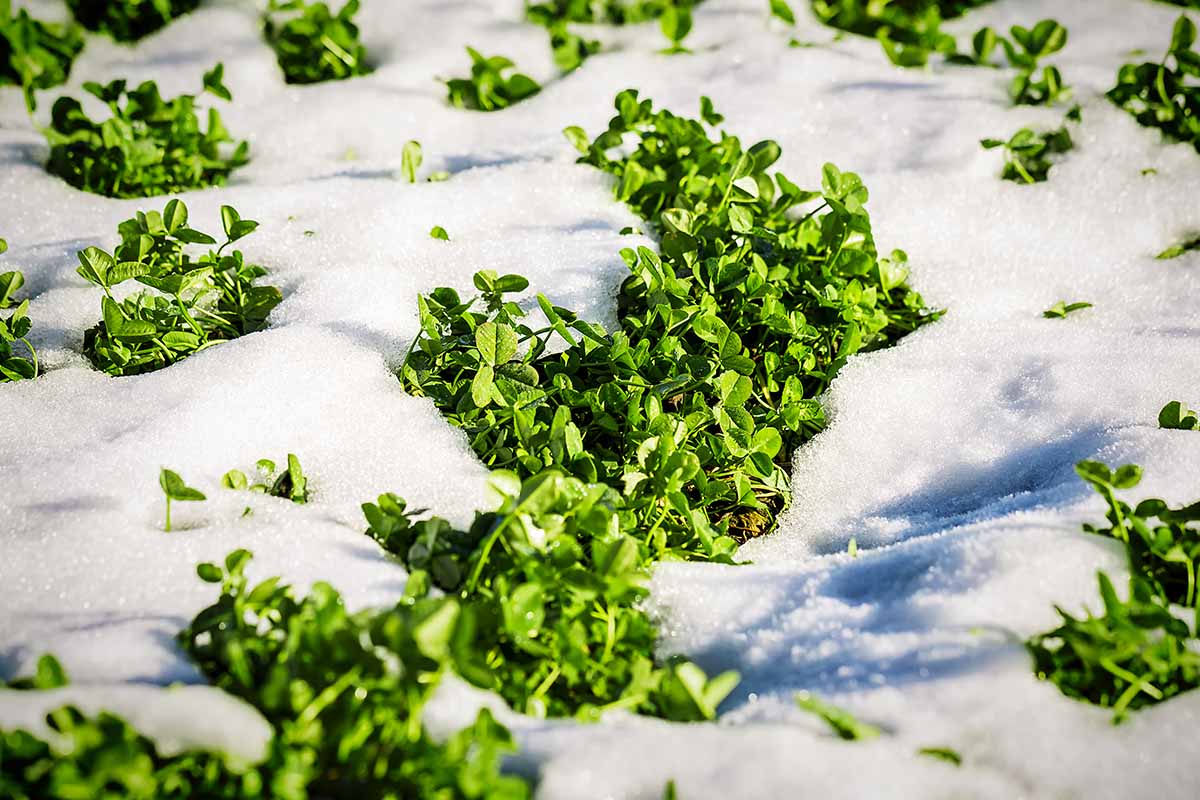
Remember that winter-killed plants form a thick, protective mulch on top of the soil while winter-hardy plants regrow in spring to provide green manure.
If any of you folks use cold weather cover crops, tell us about your favorites in the comments section below.
And for more soil building know-how, read these articles next:

